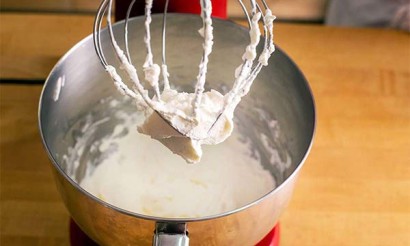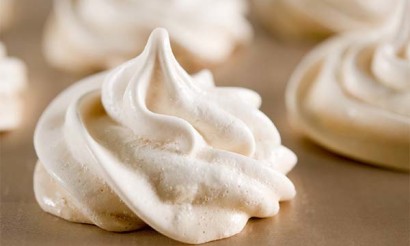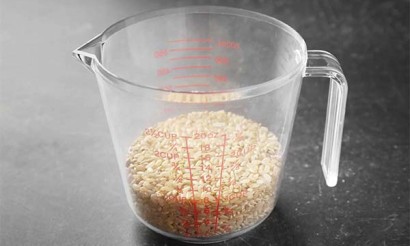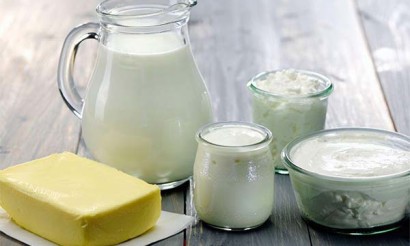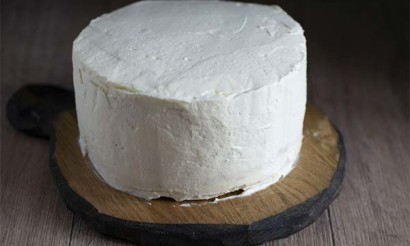How can you tell if the chicken is rotten? Signs of rotten meat
The nutritional value of chicken meat is determined by the degree of freshness, age, conditions of poultry. The product, sold at an affordable price, contains easily digestible protein, is used in dietary nutrition, recommended for people weakened after illness in all age categories.
Meals cooked from spoiled meat cause food poisoning. To preserve health, follow the recommendations on the choice, storage of the product.
How to understand if the chicken is spoiled
In order not to become a victim of severe intoxication, you need to know which chicken can be eaten, and which is subject to disposal.
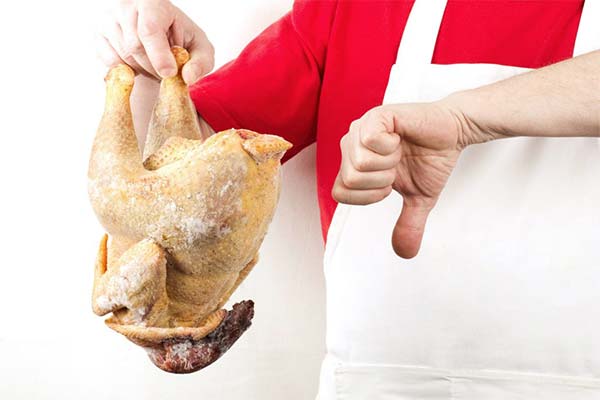
Raw
Signs of raw chicken with expired shelf life, unsuitable for use in home cooking:
- Discoloration. Yellow spots on the skin or a predominance of gray instead of pink is the first sign of a spoiled product.
- Sour or ammonia odor. A foul odor is difficult to detect if the carcass is frozen. But the odor is clearly detectable when it is cooked. If the smell is pungent, the chicken should be thrown away.
- Sticky skin, loss of elasticity. Identify the missing product by the loose consistency of meat and a slimy film on the surface, which is difficult to get rid of. The fact that the chicken is unfit for consumption is known by touching the carcass with your hands. If after pressing with the finger there is a sticky substance on it, and the dent on the carcass does not recover for a long time, it means that the meat is stale.
You should not doubt the quality of chicken if there are black, red or green moldy areas. This is a clear signal for the disposal of the product.
Frozen
Properly frozen chicken is covered with a clear, thick layer of ice. White ice forms on the surface of the carcass when it is repeatedly frozen.
You can also tell if the product is overfrozen by the ice pitting surrounded by bloated skin.
Boiled
Spoiled cooked chicken is recognized by a sulfuric smell and a sour taste. It is difficult to determine the organoleptic properties of poultry meat, spices used in cooking or dipping the product in a sauce.
When tasting, it is enough to chew a piece of chicken without swallowing.
Fried
A gray-colored cut of a fried product indicates that it is inedible. This sign is especially noticeable on the breast. The fact of spoilage is confirmed by the smell of rotten eggs, if it is not masked by marinade, spices, spices.
Signs of spoiled chicken fillets
Spoiled chicken fillets have the same signs as stale chicken - gray color, hydrogen sulfide odor, stickiness, looseness, presence of mold. But there are a few other things that come to light during cooking.
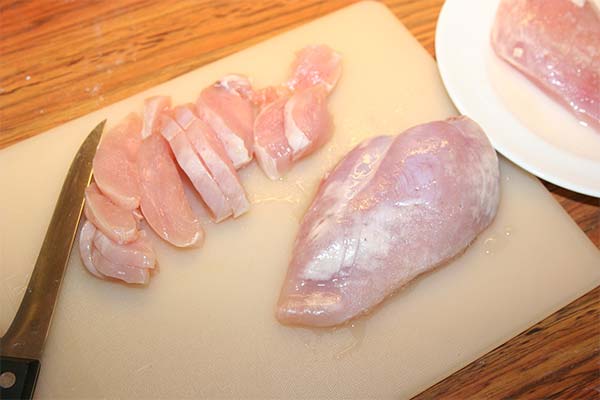
Gone are the methods of reanimating spoiled meat in retail outlets using baking soda and vinegar solutions. Now they use powdered fresheners, which not only eliminate the perfume, but also change the color of the chicken.
The rotting smell masked by chemistry is not difficult to detect when the fillets are cut into pieces, because decomposition begins in the deep layers of the muscle tissue. In addition, the sulfuric odor becomes pronounced with heat treatment.
The fact that the fillet has turned pink due to the use of dye is recognized after rinsing the flesh with running water. Removing excess moisture with paper towels leaves a colored pigment on them.
Symptoms of poisoning and first aid
Violation of storage rules, cooking technology lead to the fact that staphylococci, streptococci, E. coli, salmonella, other pathogens are activated in the product. Disease-causing microorganisms cause dysfunction of the stomach and intestines, and their products poison the entire body.
The digestive tract, cardiovascular, and respiratory systems malfunction. Blood flow worsens, and metabolic reactions slow down. The affected person is nauseated, the liquid stools become frothy, foul-smelling. He has a fever and no appetite. Abdominal colic only stops briefly after defecation.
Dehydration due to loss of fluids from severe diarrhea develops, accompanied by:
- a drop in blood pressure;
- Drying of the mucous membranes;
- a constant desire to drink;
- darkening of the urine, reduction of the urine output;
- tachycardia.
To stop intoxication, the remains of food are removed from the stomach. The victim is offered to drink 1-1.5 liters of salted water in several swallows, each time inducing vomiting by finger pressure on the root of the tongue. The stomach is flushed until its contents are clear.
Absorbents (crushed activated charcoal, Polysorb, Enterosgel) are given to bind and eliminate toxins. For rehydration use Rehydration or plenty of clean water, which should be drunk in small sips. If first aid is given correctly, the signs of intoxication pass in two days.
Seek medical help immediately, if the victims are children, pregnant women, the elderly or signs of dehydration are increasing, symptoms of intoxication persist for more than two days.
Terms and conditions of storage
Preservation of consumer properties of chicken depends not only on terms, place of storage, but also on other nuances.
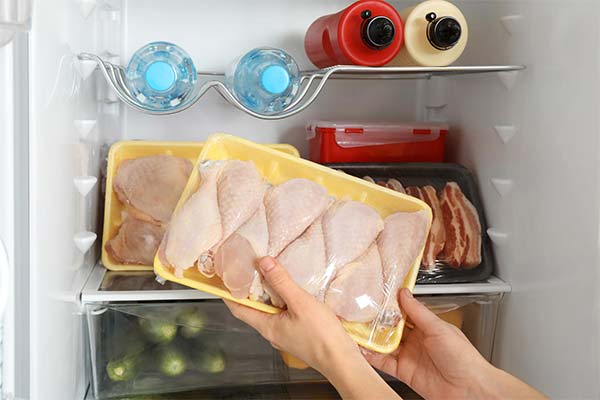
Raw chicken
In the refrigerator, chilled poultry wrapped in parchment, perforated cellophane bag does not spoil 5 days from the time of slaughter, defrosted - 12 hours, marinated - up to five days, chicken offal - 18 hours.
In the freezer chicken stored:
- 12 months at -19 degrees and below;
- half a year at t -15-18°C;
- boiled - 3 months without defrosting;
- smoked - 2 weeks.
Important! Chilled product after two days in the refrigerator is not subject to freezing.
Cooked
Boiled, baked, and fried chicken has a higher rate of rotting bacteria growth, so poultry dishes spoil quickly.
Boiled chicken retains flavor and nutritional value for three hours on the table or stove and three days in foil on the shelf of the household refrigerator. After maximum shelf life, it is recommended that the ready-to-eat product be pan-fried.
Grilled, fried, baked chicken at 4°C is kept for no more than 12 hours, smoked for one day.
What to do if your chicken stinks
Chicken with an unpleasant smell can be corrected if there are no other signs of spoilage. Ways to resuscitate poultry meat:
- The gutted chicken is washed in cold water, cut out the yellow with a grayish tint of fat layers. Make a weak solution of potassium permanganate, where the carcass is placed for a couple of hours.
- Another variant of soaking involves immersing the bird in a solution of vinegar, baking soda or salt at the rate of 1 tbsp. per 1 liter of water.
- Lemon, pomegranate juice, red or white wine can be used as an antiseptic.
- The development of pathogenic microflora prevents pickling. Smell disappears if you rub the carcass with mustard, soak it in soy sauce or use a mixture of chopped onion and garlic with spicy herbs. After marinating with spices and spices (pepper, rosemary, basil, thyme) the meat becomes soft, the musty smell is replaced by a pleasant, spicy flavor.
Can it be cooked?
If the fillet on the cut is pinkish, its structure has not changed, the chicken is cooked after soaking, marinating or after masking the unpleasant fragrance by other improvised means. Gray, sticky meat, unnaturally yellow color of fat and musty smell are reasons to discard the chicken.
Soaked, marinated chicken meat takes longer to cook than the recipe calls for. The disadvantages of poultry are well masked in spicy Asian dishes, when cooked in a charcoal grill.
How to choose fresh chicken when buying
When choosing chicken in the store, give preference to a chilled carcass, the freshness of which is easier to check.
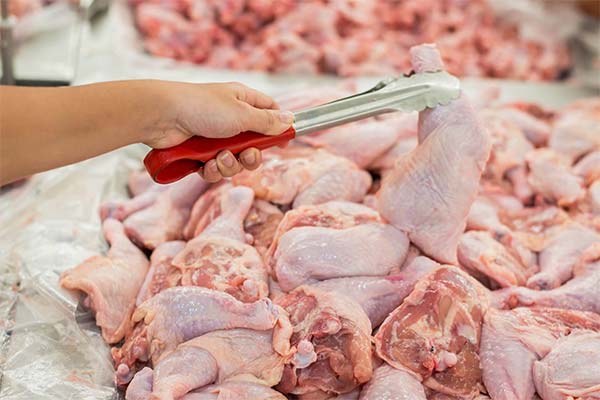
Failure to comply with conditions, storage time is recognized by yellow or gray meat of loose consistency, unpleasant odor, slippery, sticky surface. If pressing the package liquid flows from the bird, it means it was pumped with water artificially to increase its weight. A pungent smell of chlorine occurs with expired chicken.
Quality product:
- The skin is pink with pimples with no feather residue, tight to the meat.
- The fat is light yellow in color.
- The meat is firm.
- There are no bruises, dents, broken bones or other mechanical damage.
The choice of chicken in an opaque package depends on the date of production, shelf life. The presence of ice in the bag with the product - a sign of repeated defrosting.
If there are doubts about the freshness of the chicken, it is better not to risk your health, refuse to cook inedible dishes in advance. In case of food poisoning, first aid should be provided, if necessary, call a doctor.
«Important: All information on this site is provided for informational purposes only purposes. Consult with a health care professional before applying any recommendations. specialist before applying any of the recommendations. Neither the editors nor the authors shall be liable for any possible harm caused by materials."


